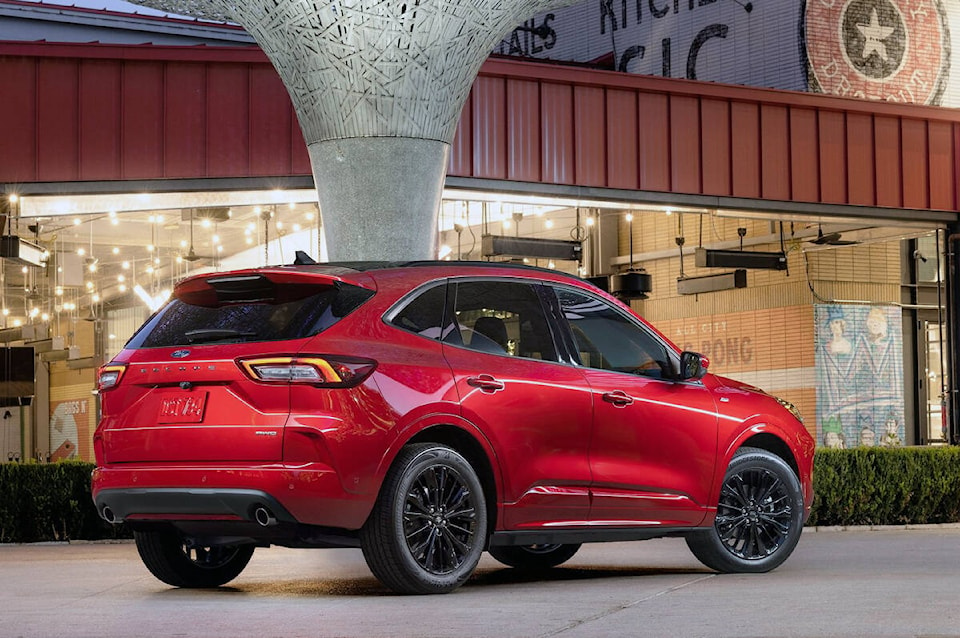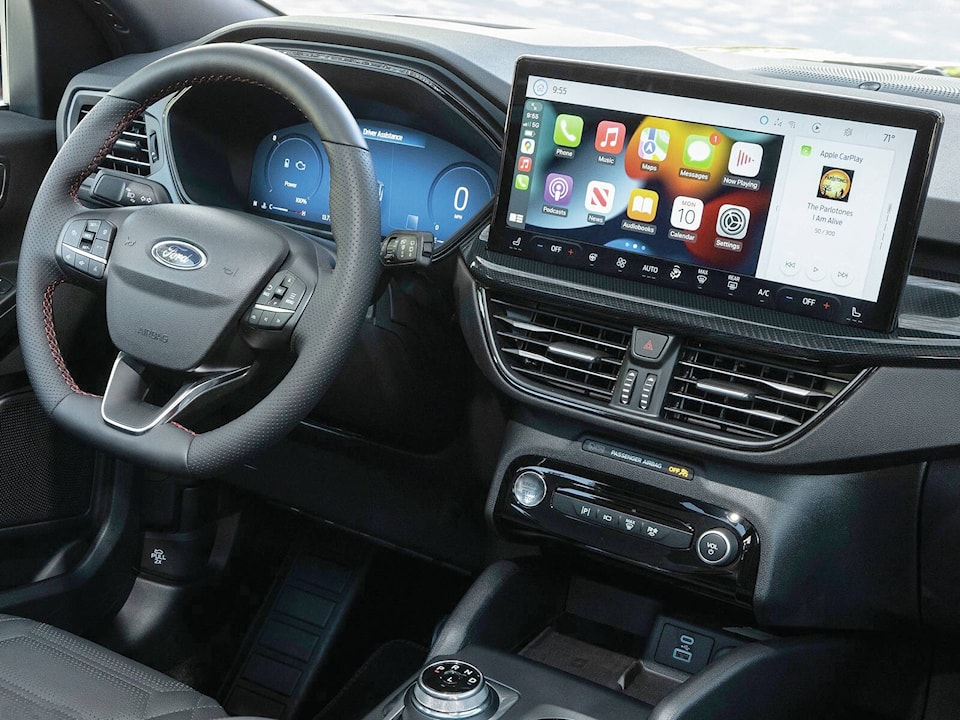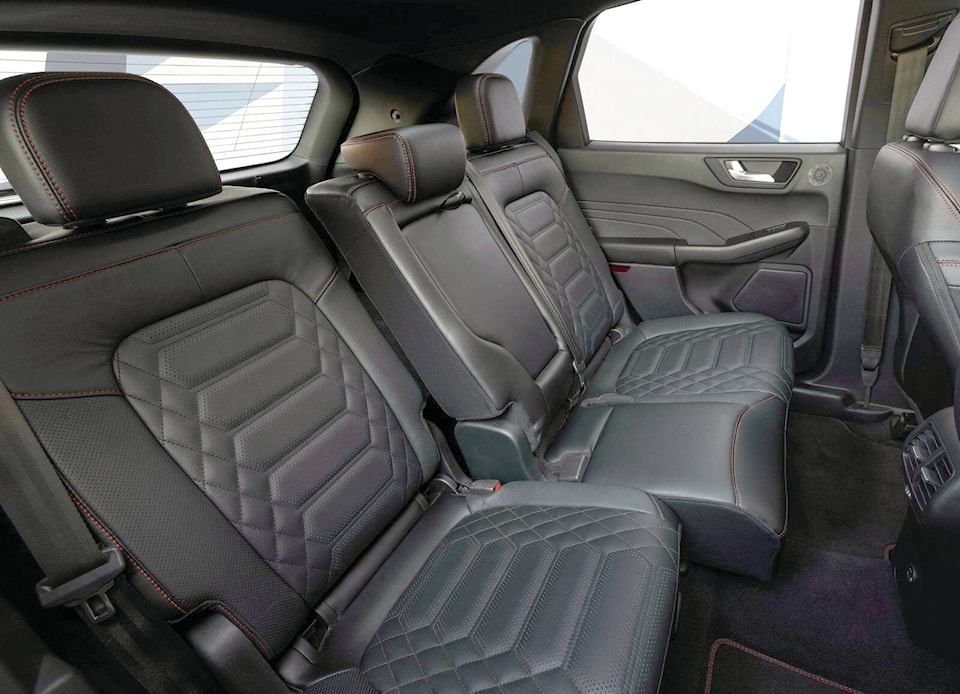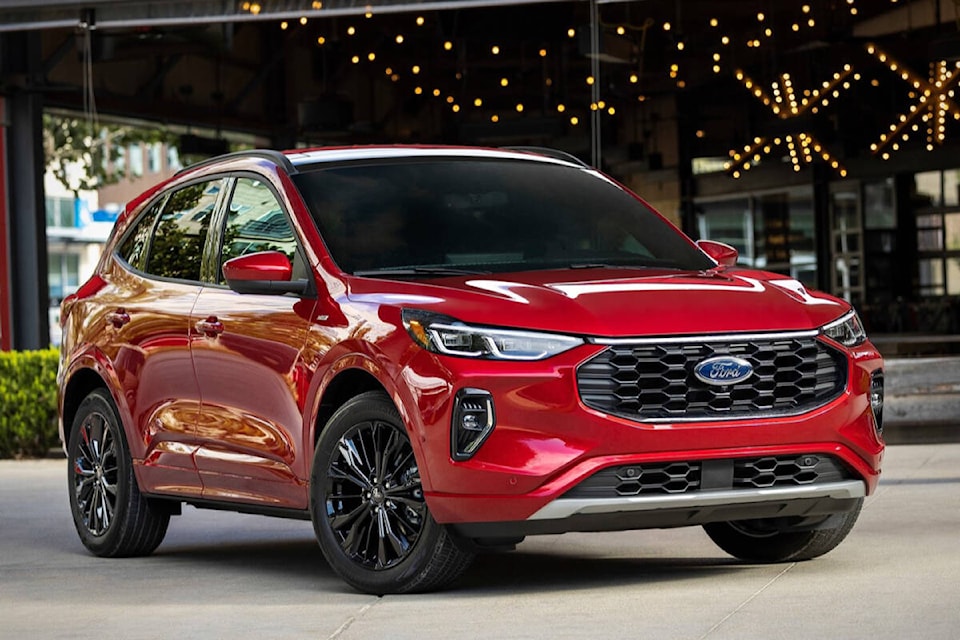Can the Ford Escape provide a pathway for more affordable travel? The short answer is yes.
High fuel costs are confronting vehicle owners, and there’s no apparent relief in sight. One solution is a battery-electric vehicle, but the high price of admission for most models is out of reach, there isn’t much selection yet and developing a charging routine is not exactly appealing to everyone.
That leaves a hybrid as a more affordable fuel saver to consider. There are many to choose from on the market, and the Ford Escape offers two.
The Escape has been available with a hybrid option since the 2005 model year, and more recently has added a plug-in variant. That places the automaker in the early-adopter category.
For 2023, the Escape was treated to a refresh that included a new and more aggressive (but attractive) nose, plus minor changes to the hood and front bumpers. The interior’s revised dashboard has an available 13.2-inch touch-screen (an 8.0-inch version is standard). Ford provides automatic over-the-air (wireless) updates for the navigation, audio and other control functions.

For passenger and cargo capacities, the Escape has about the same volumes as the key competitors, including the Honda CR-V, Toyota RAV4, Mazda CX-5 and Chevrolet Equinox. According to Ford, with the Escape’s sliding second-row seat moved fully rearward, passengers get more legroom than in the much larger Toyota Sequoia. Of course the Sequoia is significantly wider and has cavernous space for cargo, so there really is no comparison
The base internal-combustion Escape gets a 181-horsepower turbocharged 1.5-litre three-cylinder engine, with 190 pound-feet of torque. Optional is a turbo 2.0-litre rated at 250/280. Both are connected to eight-speed automatic transmissions.
The base hybrid has a nonturbo 2.5-litre four-cylinder plus an electric motor that delivers a net 200 horsepower and 155 pound-feet of torque. The plug-in hybrid (PHEV) is fitted with a larger battery that provides up to about 60 kilometres of electric-only range before the gasoline engine engages. It also makes 10 more horsepower than the standard hybrid, but produces the same peak torque.
Both hybrids are linked to continuously variable transmissions.
All-wheel-drive is available for hybrid, but the PHEV is front-wheel-drive only.
The base engine is rated at 8.0 l/100 km in combined city/highway driving, while the hybrid is rated at 6.0 l/100 km.
Escape pricing starts at $35,000, including destination charges, and the hybrid, which comes with added content, is $8,000 more. The starting price of the PHEV is $49,200.
All Escapes get Ford’s Co-Pilot 360 suite of active-safety technologies that includes blind-spot and lane-departure warnings, rear cross-traffic alert (to prevent backing into oncoming vehicles), lane-keeping assist and pedestrian detection.
The Escape hybrid ST-Line test vehicle, which is a new trim level for 2023, is a good-looking rig and was equipped with optional all-wheel-drive plus a panoramic roof, heated and power-operated front seats, power liftgate, premium audio system and upgraded seat coverings with contrasting red stitching.

The ST-Line also gets a blacked-out mesh grille, exterior trim and wheels.
The seating is firm but relatively comfortable for both rows, and outside noises are kept to a minimum. Acceleration isn’t especially quick, but there’s enough thrust to suit most driving situations. After all, the name of the game is fuel efficiency as opposed to jack-rabbit launches. Ride quality over a variety of surfaces ranks high.
The brakes are a bit touchy, possibly due to their regenerative function that converts kinetic energy (motion) into electricity to help recharge the battery.
The larger-sized touch-screen isn’t as intuitive as some competing displays, especially when it comes to the climate controls. Ford at least has provided a separate volume knob for the audio system.
With its pump-passing mission as an imperative, the Escape hybrid offers a sensible alternative to gasoline-only vehicles, and at a fairly reasonable price. With about 25 per cent better fuel economy than the base Escape, it will, however, take buyers many years to recover the extra cost of the vehicle in fuel savings. After that, though, it’s money in the bank.

What you should know: 2023 Ford Escape
Type: Front- /all-wheel-drive compact utility vehicle
Engines (h.p.): 1.5-litre I-3, turbocharged (181); 2.0-litre I-4, turbocharged (250); 2.5-litre I-4 with electric motor (200/210, PHEV)
Transmissions: Eight-speed automatic; continuously variable (hybrid)
Market position: The Ford Escape is but one of a number of similarly sized utility vehicles that offer hybrid and plug-in hybrid options, and one or more internal-combustion choices, plus available all-wheel-drive.
Points: Modest redesign makes a bolder statement. • Available large display screen could take some getting used to. • Wide assortment of gasoline and hybrid power systems means there’s something for just about everyone, except EV buyers. • A 25-per-cent improvement in city/highway fuel consumption for the standard hybrid version compared with the turbo 1.3-litre engine.
Active safety: Blind-spot warning with cross-traffic backup alert (std.); active cruise control (std.); front emergency braking (std.); inattentive-driver alert (std.); lane-departure warning (std.); pedestrian warning (std.)
L/100 km (city/hwy): 8.0 (base 1.3)
Base price (incl. destination): $35,000
BY COMPARISON
Honda CR-V hybrid
- Base price: $51,000
- A 204-h.p. 2.0-litre I-4 plus electric motors, AWD is standard.
Toyota RAV4 hybrid
- Base price: $45,800
- Wildly popular, a 219-h.p. 2.5-litre I-4 plus two motors, AWD is std.
Hyundai Tucson hybrid
- Base price: $43,250
- Turbocharged 1.6-litre I-4 plus electric motor makes 226 h.p., AWD is std.
– written by Malcom Gunn, Managing Partner at Wheelbase Media
If you’re interested in new or used vehicles, be sure to visit TodaysDrive.com to find your dream car today! Like us on Facebook and follow us on Instagram
